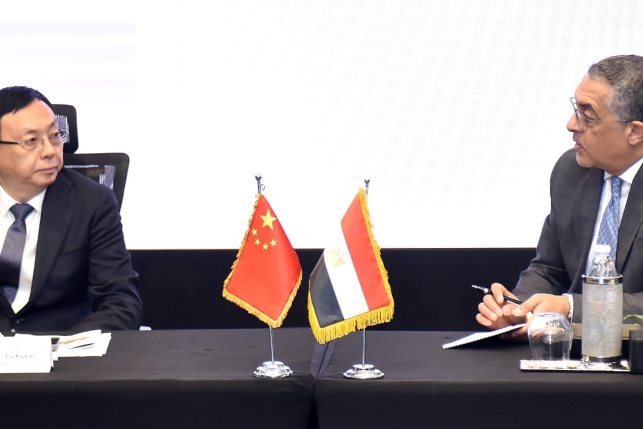Reaction Overblown? CEB's decisions led to intense selling: Op-ed
The CBE’s recent decisions have led to an intense selling wave in banking sector stocks. Evidence, however, invalidates investors’ concerns

The Central Bank of Egypt (CBE)’s decision requiring banks to retain profits and not to make any dividend payouts for the fiscal year 2020 has caused a great concern for investors. This has led to a wave of intense sales in the Egyptian stock market, which has significantly hit the shares of the biggest Egyptian banks.
In fact, the shares of the Commercial International Bank (CIB), one of the largest players in the banking sector, fell to their lowest levels in 10 years’ time.
Are Egyptian banks really as weak as the stock prices suggest and should not be invested in? Or is it just an overblown reaction that does not fairly reflect the economic and financial reality of Egyptian banks?
Banking sector performance and projections
In the last quarter of 2020, the combined net profits of Egyptian banks grew by about 13 percent, except for the Housing and Development Bank whose profits fell by almost 22 percent.
Moreover, the net interest margin — difference between interest paid and interest received — has been expected to decline by approximately 69 basis points towards an average of 5-5.8 percent in 2021 and 2022. As for the dividend payouts for FY2021/22, they are projected at about 35 percent — up from actual distribution of 23 percent in 2019.
Egyptian banks’ shares are traded at a price-to-book value of 0.93x (Price per share/ book value per share) and have an earnings multiplier of 5.3x (Price per share/ earnings per share) for the year 2021 – two metrics that compare valuations of banks in different geographical areas to find undervalued or overvalued shares.
Analysis of Egyptian banks’ stocks indicates the sector’s ability to achieve a compound annual growth rate (CAGR) of 16.5 percent and a return on average equity (ROE) of 17-19 percent in the period from 2021 to 2024.
Comparing these metrics for Egyptian banks to the same metrics of Gulf banks, we find that Egyptian banks are traded at a price-to-book value of 1.7x and a profitability multiplier of 15.6x —The lower these values are, the lower the bank’s price is and the more attractive its price is—. As for the ROE, Gulf banks have an ROE of 13.5 percent, down 3.5 to 5.5 percent from Egyptian banks, which means Egyptian banks are cheaper than Gulf banks.
Even when considering a worst-case scenario where the return on treasury bills (deposit and lending rates) will not drop lower than they are today and hence borrowing rates will not increase — banks’ negative impact on credit—, the valuations would stay positive as banks will be investing in treasury bills and getting high net interest margins, a scenario that had been experienced before in the period of rising interest rates from 2016 to 2019.
An overblown reaction
In April, the index for the banking sector performance was at its lowest level in a year’s time standing at 795 points, down from 903 points last February, indicating a decline of 12 percent in less than two months.
Nevertheless, the downward trend of interest rates on Egypt’s treasury bills — with a likely decrease of 2 to 3 percent, calculated on basis of the real interest rate (i.e. the difference between the nominal interest rate specified by the CBE and the inflation rate) — is considered a stimulating factor that suggests possible improvement in the banking credit sector.
Despite their low market prices, there are a number of factors that provide a positive optimistic outlook for Egyptian banks. These include the sustained ability of Egyptian banks to generate profits during Covid-19, with a net income average growth rate of 13 percent (excluding Housing and Development Bank).
This rate makes the banking sector one of the highest profit margin sectors in the Egyptian Stock Exchange.
Another factor is the increase in the loan to deposit ratio (LDR), expected to reach 60 percent in the year 2021, given this year’s tend of falling interest rates. Moreover, there are positive expectations of the working capital adequacy ratio, which promotes financial stability and banks’ viability.
Selling wave is not justified
The aforementioned evidence indicates that the selling wave in the banking sector is not justified, considering it is one of the economy’s strongest sectors capable of maintaining continued profits in times of crises.
Evidence indicates that the Egyptian banks are undervalued — their market price is lower than their real value.
Moreover, the legislative framework and economic environment in Egypt offer many opportunities that support banks’ viability, including the trend toward expanding in small and medium enterprises.
This trend has required that banks increase their loan portfolio by five percent to account for 25 percent of total credit portfolio by 2022.
Moreover, the CBE’s decisions to eliminate fees on ATM withdrawals and bank transfers till June 2021 and to suspend dividend payouts for the fiscal year 2020, as well as its initiatives that will open up new horizons and opportunities of growth in the banking system including the LE 100 billon worth Real estate Appraiser for low and middle-income earners, will reinforce the sector’s growth.
Given the high rates of net interest margin in such initiatives, they are likely to contribute to improving the profitability of banks and making investing in banks a win-win deal.





